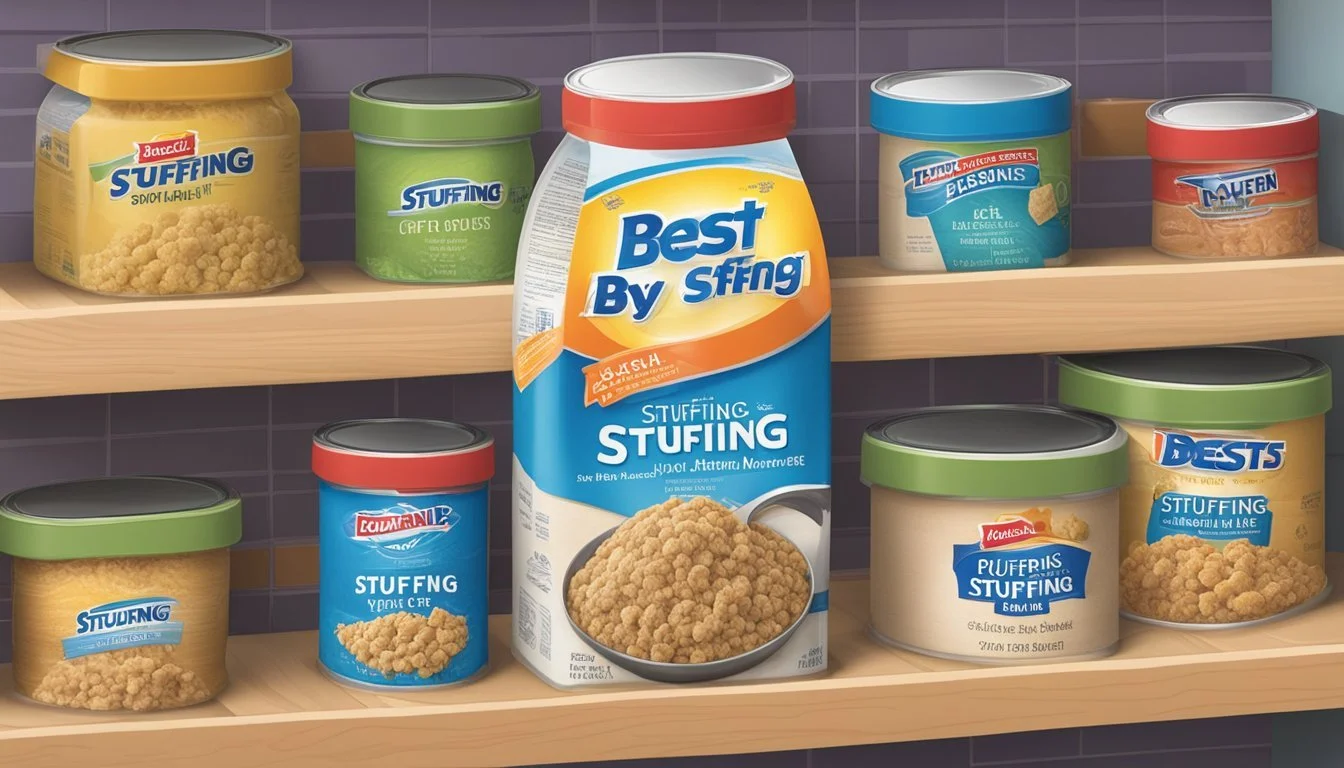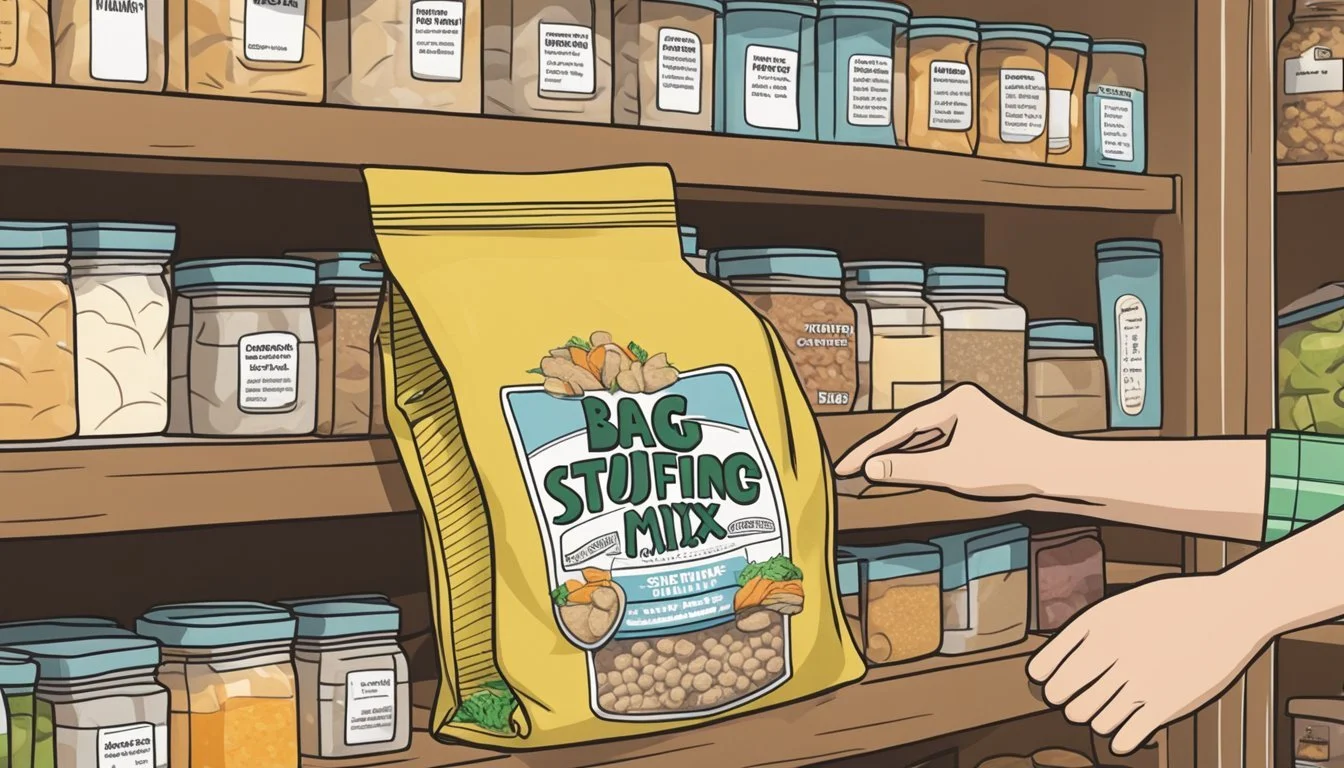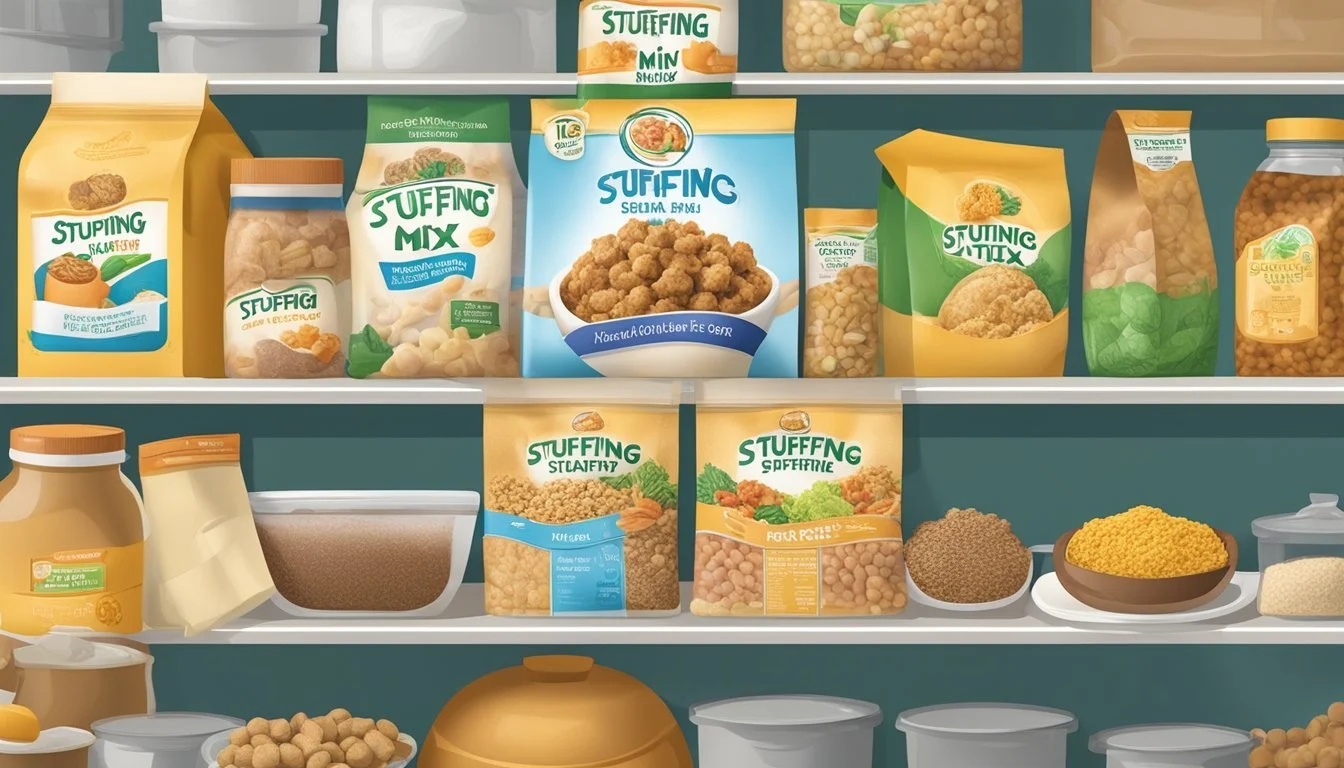How Long Does Stuffing Mix Last?
Shelf Life and Storage Tips
Determining the shelf life of stuffing mix is essential for maintaining both quality and safety. An unopened package of stuffing mix stays at peak quality for 12 to 18 months when kept in a cool, dry area. Proper storage conditions are crucial, as they significantly extend the longevity of the product. Although the stuffing mix can generally be safe to consume for a period beyond the expiration date, the quality may start to decline.
Once opened, the window for consuming stuffing mix shrinks to a mere two to three months for optimal taste and freshness. During this time, it is not only the sensory aspects—such as flavor and texture—that can be impacted, but the safety too. If the mix starts to show any signs of spoilage, it should not be consumed.
Stuffing mix, often a blend of dried bread crumbs and seasonings, is a staple in many households for its ease of preparation and versatility. As with any food product, consumers should pay attention to both the storage environment and the expiration dates provided to ensure the mix remains safe to eat and of the best possible quality.
Understanding Stuffing Mix
When considering the shelf life of stuffing mix, two critical factors come into play: the ingredients used in the mix and the packaging and sealing methods employed to keep it fresh.
Ingredients and Their Impact on Shelf Life
The ingredients in a stuffing mix can greatly affect its longevity. Typically, stuffing mixes consist of dried bread or breadcrumbs, dehydrated vegetables, seasoning, and preservatives. These components are chosen for their low moisture content, which helps extend the shelf life of the product. Preservatives may include salts or other additives to inhibit bacterial growth, further ensuring the mix stays usable for extended periods.
Dry Ingredients: Dried bread or breadcrumbs, herbs, dehydrated vegetables.
Preservatives: Salts, additive agents.
Package Types and Sealing Methods
The way stuffing mix is packaged and sealed is integral to its shelf life. An unopened package of stuffing mix that is properly sealed can last at room temperature for a considerable time. Generally, manufacturers use packaging designed to protect the contents from moisture, air, and contaminants.
Packaging: Boxes, plastic bags or vacuum-sealed pouches.
Sealing:
Unopened: Hermetically sealed to prevent exposure to air and moisture.
Opened: Transfer to an airtight container or use a resealable plastic bag to maintain freshness.
When stuffing mix is stored in an airtight container, it helps minimize the contact with air and moisture, two factors that can lead to a decline in quality and shortening of shelf life. A strong seal is essential in preventing contaminants and extending the product's usability.
Shelf Life and Storage Conditions
The longevity of stuffing mix relies on correct storage practices, with unopened packages boasting a lengthy shelf life under ideal conditions. The variance in shelf life once opened demands careful management to maintain quality.
Unopened Stuffing Mix
Unopened stuffing mix can remain at peak quality for 12 to 18 months when stored at room temperature. For optimal preservation, it should be kept in a cool, dry place away from direct light and exposure to moisture, which can hasten spoilage.
After Opening: Factors Affecting Longevity
Once opened, a stuffing mix's shelf life is reduced, generally lasting only 2 to 3 months. Moisture, air, and contaminants are critical factors here; improper storage can allow these elements to compromise the mix's freshness and flavor.
Best Way to Extend Shelf Life
To maximize its shelf life after opening, staple or seal the original bag and place it in a resealable plastic freezer bag or an airtight container. Store this in a pantry or another dry place at a stable temperature to defend against quality degradation over time.
Food Safety Considerations
When considering the shelf life and safety of stuffing mix, it's essential to recognize the signs of spoilage to prevent any health risks associated with consuming spoiled food.
Signs of Spoilage and Food Safety
A stuffing mix that has gone bad may exhibit certain visual and olfactory signs that one should be attentive to. These signs include:
Smell: A sour or off-putting smell is a clear indicator that the stuffing mix is no longer safe to consume.
Mold: Visible signs of mold, which can be green, black, or white spots on the mix, indicate spoilage.
Texture: Any changes in texture, such as a sticky or slimy feel, suggest the presence of harmful bacteria.
If any of these signs are detected, the stuffing mix should be discarded immediately to ensure food safety.
Health Risks of Spoiled Stuffing Mix
Consuming spoiled stuffing mix poses several health risks, primarily due to the bacteria that cause food spoilage. These bacteria can include:
Salmonella: Often associated with poultry and eggs, it can be present in stuffing mix when cross-contamination occurs.
E. coli: Can result from improper handling and can cause severe gastrointestinal distress.
Listeria: Can lead to serious infections, especially in pregnant women, infants, and those with compromised immune systems.
To avoid the risk of food poisoning, it is crucial that stuffing mix is stored properly and examined for spoilage before consumption. If there is any doubt about the safety of the mix, it is best to err on the side of caution and not consume it.
Proper Use and Handling
As a staple of holiday meals (What wine goes well with holiday meals?) and comfort dinners, stuffing mix needs to be prepared and stored correctly to maintain food safety and quality. The following guidelines will assist in ensuring that any stuffing, whether used in recipes like meatloaf or enjoyed alone, remains delicious and safe to consume.
Preparation and Cooking Tips
When preparing stuffing mix, one should always adhere to the instructions provided on the packaging. If the stuffing is being used in recipes, like meatloaf, it's important to ensure that it's fully cooked to the recommended internal temperature for meat—165°F (74°C) is typically advised for poultry-based dishes to avoid foodborne illness.
Reheating Leftover Stuffing:
Always bring leftover stuffing to an internal temperature of 165°F (74°C) to ensure safety.
Reheat only the amount that will be eaten, as repeated reheating can compromise the quality and safety.
Refrigeration and Freezing Leftovers
Refrigerating Leftover Stuffing:
Store leftovers in the fridge within two hours of cooking to minimize the risk of bacterial growth.
Use an airtight container to maintain quality and taste.
Leftover stuffing should be consumed within 3-4 days.
Freezing and Thawing Leftover Stuffing:
To freeze leftover stuffing, pack it in airtight containers or heavy-duty freezer bags.
Label packages with the current date, as frozen stuffing is best used within one month for optimal quality.
When ready to eat, thaw frozen stuffing in the refrigerator, not at room temperature.
After thawing, stuffing can be reheated in the oven or microwave, ensuring it reaches the safe temperature of 165°F (74°C). Baking in the oven until it's hot throughout is a common reheating method to recapture some of its original texture.
Maximizing Quality and Flavor
When it comes to stuffing mix, the priority is maintaining its quality and enhancing its inherent flavors. Proper storage is critical for freshness, and the addition of specific ingredients can elevate the taste profile substantially.
Optimal Storage for Freshness
To ensure stuffing mix remains fresh for up to 12-18 months, the key is to keep it in a cool, dry area. Moisture is the enemy of freshness, and thus, it's vital to maintain:
Temperature: A pantry or cabinet away from heat sources.
Packaging: Keep the mix in its original packaging to protect against environmental factors.
Aligning with these storage conditions helps preserve both the quality and flavor of the stuffing mix.
Enhancing Stuffing Mix with Ingredients
Simple additions to a stuffing mix can greatly boost its flavor:
Herbs: Incorporating fresh herbs like parsley, thyme, or rosemary imparts vibrant taste.
Vegetables: Sauteed onions, celery, and carrots add texture and richness.
Broth: Substitute water with chicken or vegetable broth for a deeper flavor profile.
Butter: Considering a swap to browned butter can introduce a nutty, caramelized note.
Monitoring the salt content is also essential to prevent overpowering the stuffing's natural flavors.
Troubleshooting Common Issues
When preparing stuffing mix, maintain the desired texture by managing moisture and heat. Ensuring proper storage can prevent common issues like dryness and clumping.
Dry or Crumbly Stuffing Solutions
If the stuffing mix becomes dry or crumbly, it may have been exposed to too much air, leading to loss of moisture. To resolve this:
Rehydrate: Add a small quantity of broth or water and stir to reintroduce moisture.
Cover: When reheating, cover the dish to trap steam and moisten the stuffing.
Stirring should be gentle to avoid further breaking the crumbs, which can lead to more unwanted dryness.
Addressing Stuffing Mix Clumping and Moisture
Clumping occurs when stuffing mix absorbs excess moisture or is stored improperly. If the stuffing mix is clumping:
Dry Out: Spread the mix on a tray and place it in a low-heat oven to evenly dry out the clumps.
Prevent Damage: Store in airtight containers to protect from humidity.
It is essential to prevent clumping as it can affect both the texture and flavor of the stuffing, making it unpleasantly moist and dense.
Frequently Asked Questions
When considering the longevity and safety of stuffing mix, one must understand the difference between the expiration and best by dates, learn to recognize signs of freezer burn, and be aware of cross-contamination risks.
Expiration Date Versus Best By Date
The expiration date on stuffing mix indicates when it should no longer be consumed, due to safety concerns. In contrast, the best by date suggests when the product will be at its peak quality. Stuffing mix often remains safe to eat past the best by date, typically retaining optimal quality for 12-18 months if stored in a cool, dry area. However, after the expiration date, it is advised to discard the mix to avoid any health risks.
Dealing with Freezer Burn on Stored Stuffing Mix
Freezer burn occurs when air reaches the food's surface and causes dehydration and oxidation. For stuffing mix, this could mean a loss of flavor and texture, but it doesn't render the food unsafe. One can still use stuffing mix with freezer burn in dishes where it will be rehydrated, such as soups or as part of a casserole, though the quality may be compromised.
Cross-Contamination Concerns During Preparation
During the preparation of homemade stuffing or even use of Stove Top stuffing (how long does stove top stuffing last?), keeping the mix free from contaminants is crucial. Any utensils, surfaces, or hands that come into contact with raw meat must be thoroughly cleaned before touching the stuffing mix. Cross-contamination can lead to foodborne illnesses, especially if the stuffing does not reach the recommended internal temperature of 165°F in the oven or microwave when cooked. Always store leftovers in the fridge and consume within 3-5 days to minimize safety concerns.









